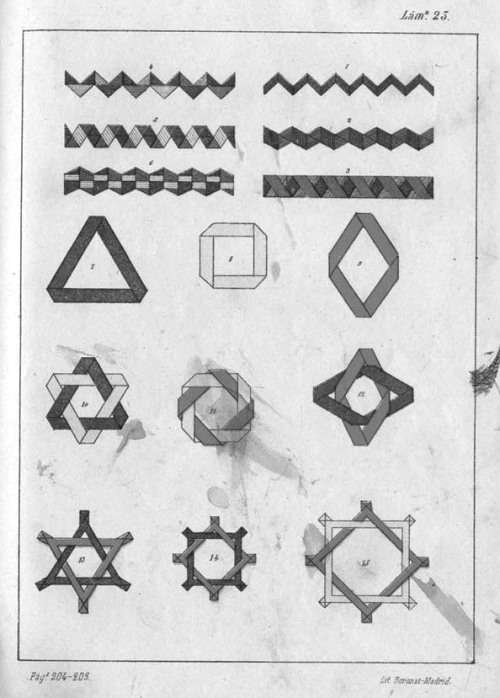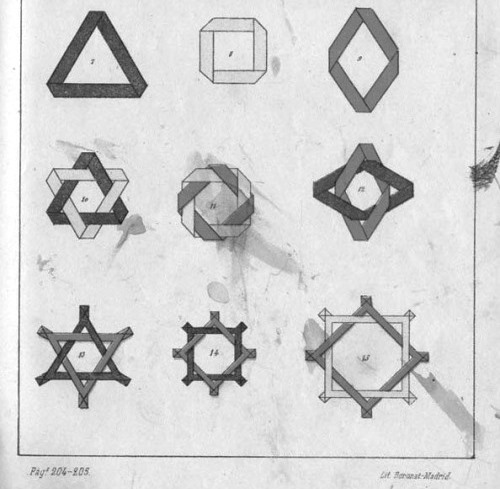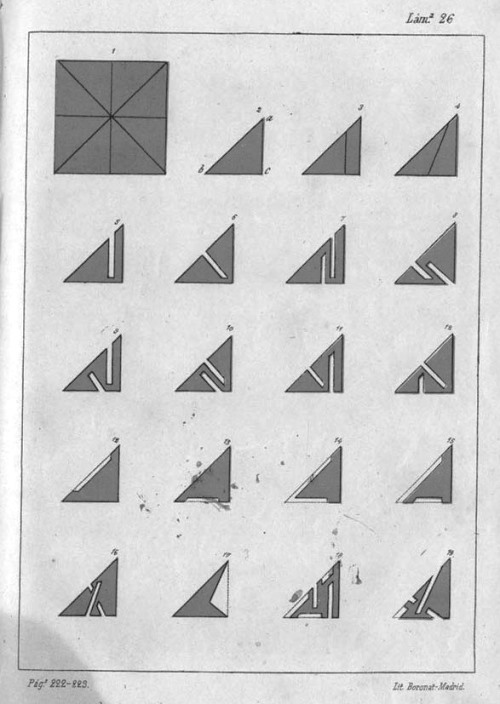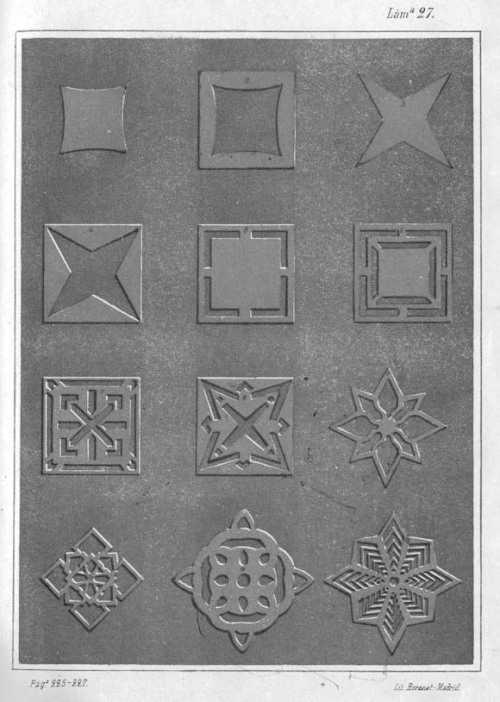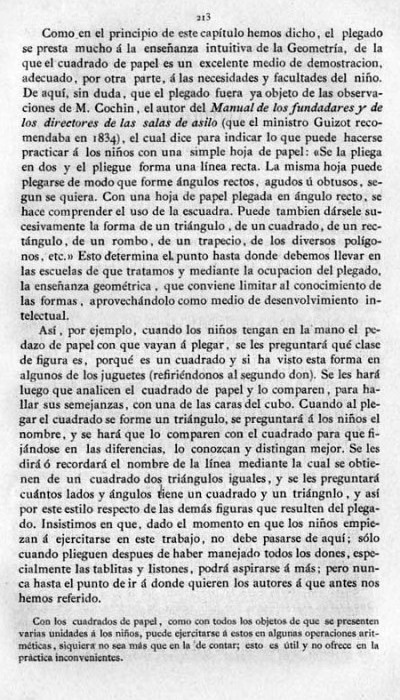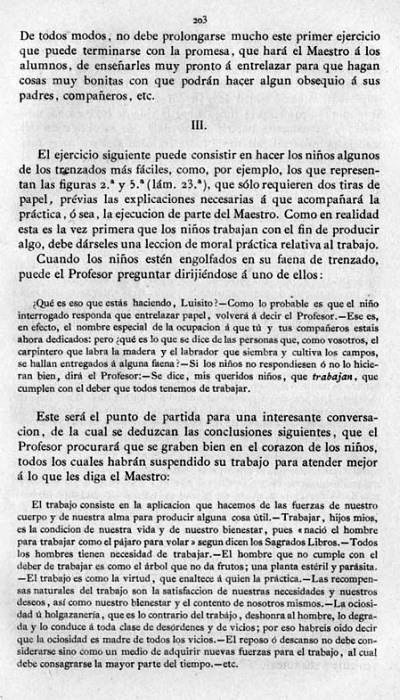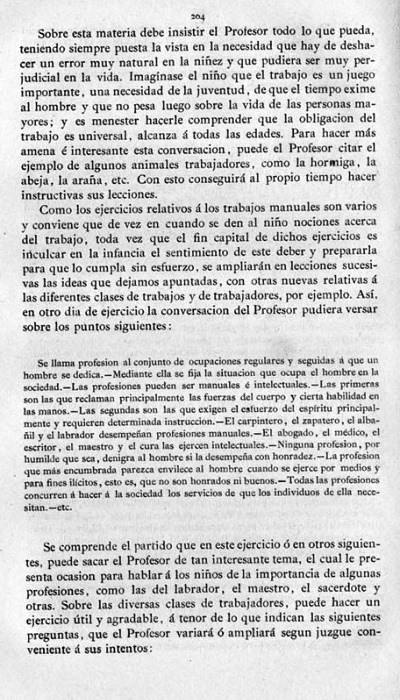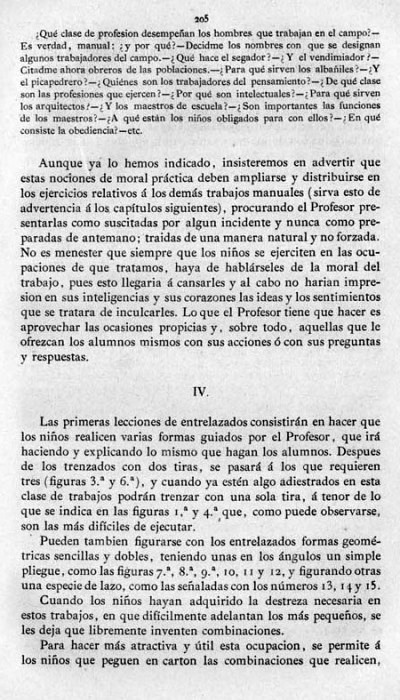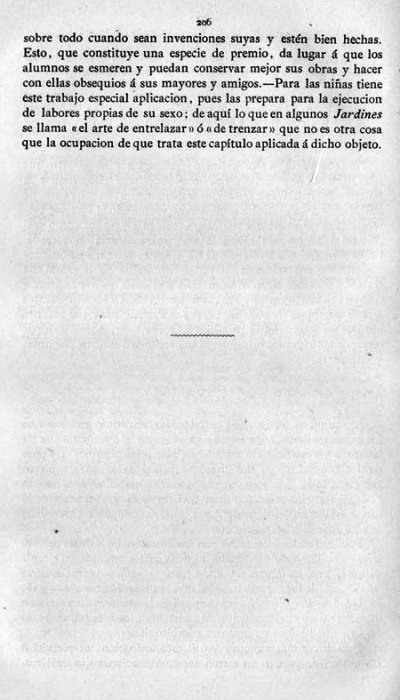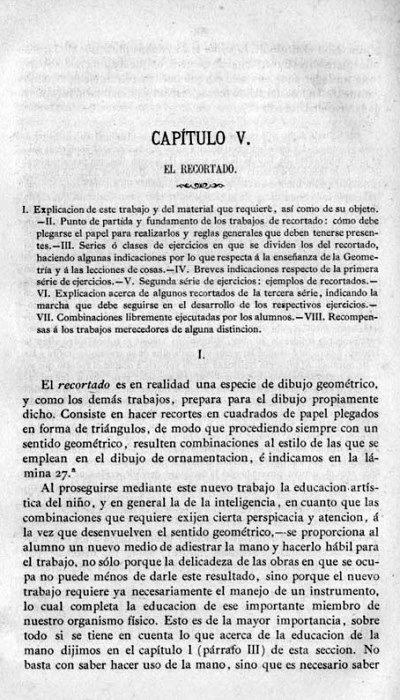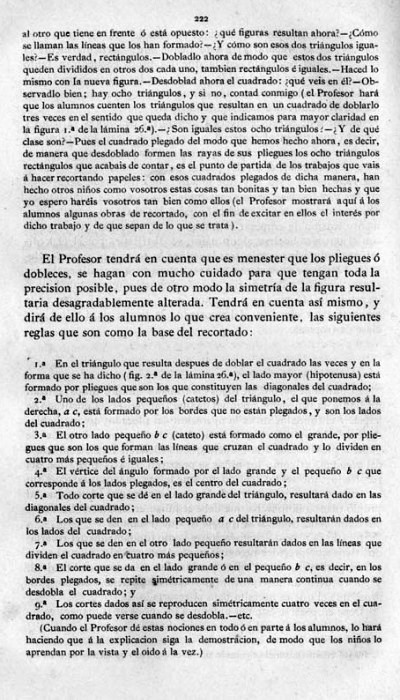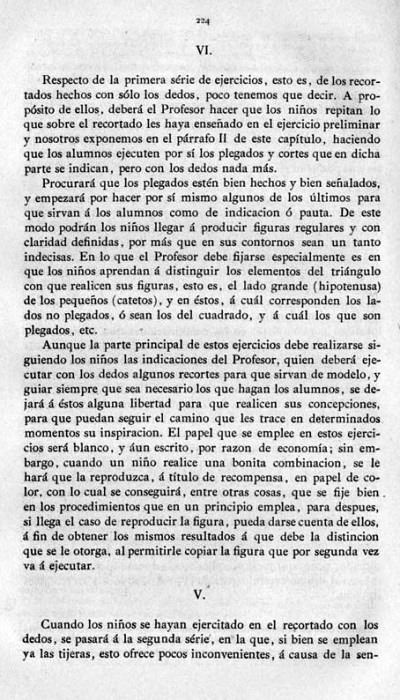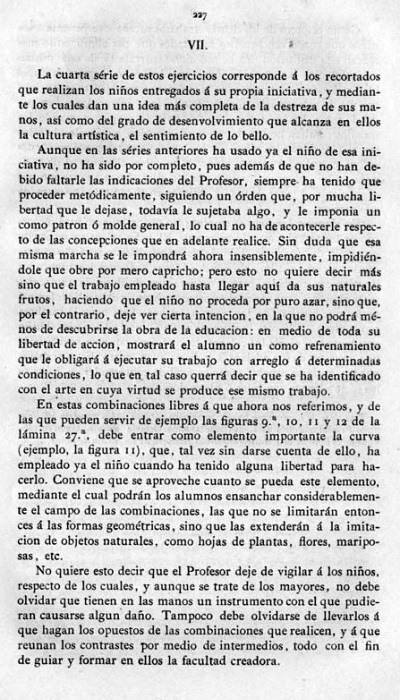| The Public Paperfolding History Project
Last updated 6/11/2025 x |
|||||||
| Manual Teorico-Practico de Educacion Parvulos by D Pedro de Alcantara Garcia, 1879 | |||||||
| 'Manual
Teorico-Practico de Educacion Parvulos' by D Pedro de
Alcantara Garcia was published in Madrid by the Imprenta
del Colegio Nacional de Sordo-mudos y de Ciegos in 1879.
It was the winner of a competition for 'a theoretical -
practical treatise on teaching pre-school children
according to the kindergarten system, known by the name
of Froebel' set up by a decree issued by the Ministry of
Development on 31st March 1876 (in fact it was the only
entry to meet the requirements of the rules). A full copy of the work can be accessed online here. Inter alia there are chapters devoted to the Froebelian occupations of El Trenzado o Entrelazado (Flechten and Verscnuren) , El Plegado (Falten) and El Recortado (Ausschneiden und Aufklaben). A full copy of the chapters relating to these occupations is included at the foot of this page. While the author relies heavily on material drawn from previous works such as those by Jacobs and Delon he criticises their belief that paperfolding is a useful way to teach mathematical concepts to young children. **********
********** Analysis El Plegado - Paper Folding Folds of Knowledge The opening paragraph says, roughly translated: 'Children instinctively ... know and perform the operation of folding and always begin from its true starting point, which is the square, since it is observed that whenever they try to make some of the objects they obtain by folding (pajaritas, boats, hats etc) they begin by squaring the paper.' The passage goes on to describe How to construct squares from an oblong.
********** The Salt Cellar The author describes how to make various simple geometric folds culminating in The Double Blintz Basic Form and then says: 'Put a finger in each of the small squares and press them together ... We have a Salt Cellar (un salero) here. From this figure ... we will move on to others ... Only when students have exercised for some time in this kind of work and it is known that they are somewhat skilled ... are they allowed to invent forms (for themselves)'.
********** Other Folds of Life 'Starting from the salt-cellar, and by simply modifying and increasing the folds ... figures can be made that mimic a star, a pajarita, a little boat without sails, another with them, a pair of pants, a flask, a double ship, a table, a windmill, a closed box, a wallet for coins and others that, because they are well known, we don't need to mention.'
********** Folds of Beauty 'Plate 24 shows some of the forms that can be made with the square of paper: These forms give, in general, an idea of how to fold the square to obtain some of the aforementioned forms, and by themselves they constitute artistic forms based on the geometric ones.'
********** Picture 4 appears to be the blintzed square and picture 5 The Double Blintz Basic Form, from the two sides of which the Schonheitsformen shown in pictures 6 to 13 are developed. Picture 14 is The Windmill and picture 15 a Schonheitsformen developed from it.
********** El Trenzado - Braiding The content of this chapter appears to be almost entirely borrowed from Delon and repeats her statements that simple braiding should introduced to very younf children at about the same time as the ball, but that designs folded from one strip are much more difficult and should be introduced much later on. Note that the simplest design in Delon, the Witch's Ladder, is not mentioned in this work.
***
********** Pictures 3 and 6 show designs that each use 3 strips of paper - Braiding per se
********** Pictures 1 to 4 show .... designs folded from one strip of paper only - Borders and Corners
********** El Entrelazado - Interlacing
********** El Recortado - Ausschneiden und Aufkleben
********** Selected pages
|
|||||||









